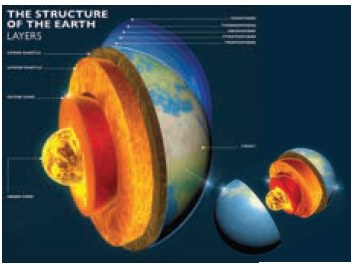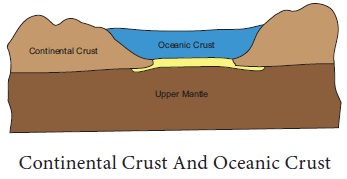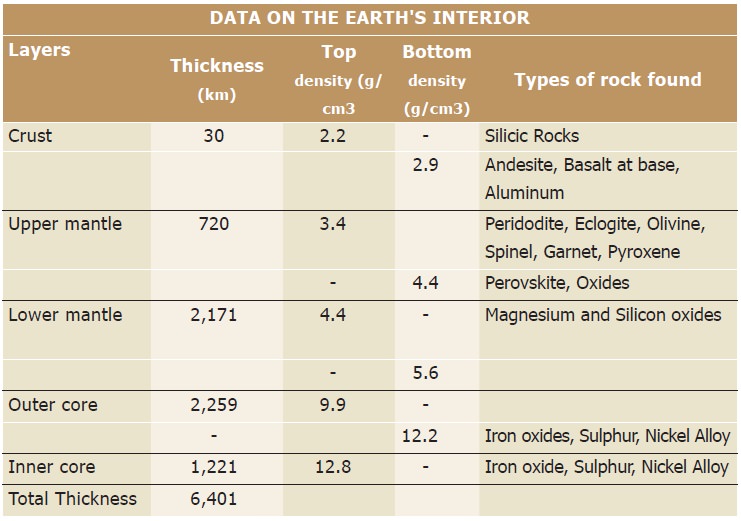Chapter: 9th Social Science : Geography : Lithosphere – I Endogenetic Processes
Structure of the Earth
Structure of the Earth
The outer surface and inner core of the Earth are
totally different in their nature and structure. The structure of the Earth’s
interior is divided into three layers namely the crust, the mantle and the core.

Crust
Crust is the outer layer of the Earth, where we
live. It is the skin of our Earth, which ranges between 5 to 30 km. It is the solid and
rigid layer of the Earth. The thickness of the crust is greater below the
continents than the ocean floor. The crust is classified as continental
crust and oceanic crust. The major elements of crust are
Silica (Si)
and Aluminium (Al)
and thus, it is termed as SIAL.

Continental Crust And Oceanic Crust
Mantle
The interior part beneath the crust is called
mantle, which is about 2,900 km thick. The major elements of the mantle are
Silica (Si)
and Magnesium (Mg)
and hence it is also termed as SIMA. In the upper part of the mantle, the
rock remains solid, whereas in the lower part of the mantle, rocks are in
molten form. This molten rock inside the Earth is called ‘magma’.
Core
The core is the innermost and hottest layer of the
Earth which lies below the mantle. It is composed mainly of Nickel (Ni)
and Iron (Fe).
Hence it is called NIFE. The
core is divided into Solid inner core and Liquid outer core. The presence of large quantities
of iron in the core is responsible for the Earth’s gravitational force.
As the Earth rotates on its axis, the liquid outer core spins over the solid
inner core and generates the Earth’s magnetic field. This is responsible for
the functioning of the magnetic compass. Due to high pressure, the materials in
the inner core are unable to move and hence remain solid.

Related Topics